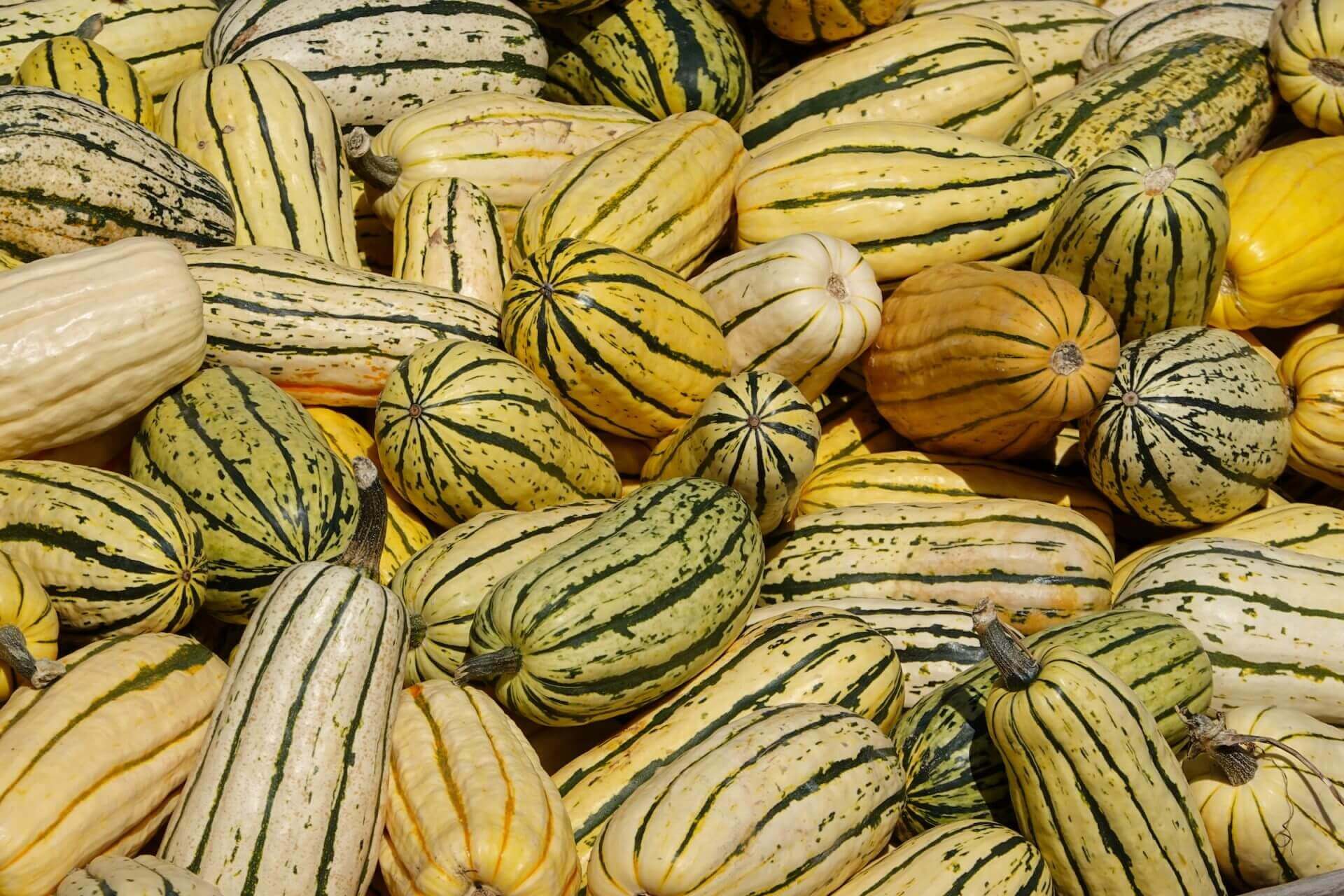Curing is an important and necessary step in making sure your harvest can be stored for winter. Essentially, curing is the drying and toughening of the skin. Crops that have been cured properly will last all winter in good storage conditions. Without curing, they rot!

What needs to be cured?
Some crops must be cured to make long-term storage possible, but this isn’t true for everything. Curing is required to store: Garlic, Onions, Potatoes, and Winter Squash.
There are 2 ways to cure crops:
- Method 1: Outdoors in the sun
- Method 2: Indoors in a warm airy room
In this post, we’ll be exploring both methods, followed by a little FAQ. If you have any other questions or experiences to share about curing, please leave them in the comments below or email our horticulture team at [email protected]
Method 1: Curing outdoors in the sun
When the weather is good, curing takes place right in the field! When crops are fully mature, harvest them carefully, making sure not to bruise or scratch them. Simply pull up garlic, onions, and potatoes. Snip Winter Squash from the vine, leaving 1-4 inches of stem on the squash.
Leave them right where they are for 14 days until they are thoroughly dry. If wet weather or frost is expected, leave them as long as possible before moving them into a sheltered environment for the remaining days.
Method 2: Curing indoors in a warm airy room
Carefully move harvested crops into a warm airy room, making sure not to bruise or scratch them. Hang or pack them into containers that allow for lots of air circulation. Ideally, they should be kept at 25-30C for 14 days. After curing, crops should be kept in a cool area out of direct sun for long-term storage.
FAQs
Is curing really necessary?
Yes. Garlic, Onions, Potatoes, and Winter Squash that have not been cured will rot in long-term storage. If long-term storage is your goal, curing is non-negotiable!
I never do anything special and my crops still last all winter. Curing doesn’t seem THAT important…
Sounds like you’re harvesting right and storing well. That’s curing – and you’re a natural!
How can I tell if my produce is done curing?
Generally speaking, if it is kept warm and dry for a full 14 days, it is done. With experience, you may be able to tell from inspecting potatoes and winter squash but as a beginner, that would be tough! Garlic and onions are easier to tell. Their skins should be dry as paper and flake away at your touch- just like the garlic and onions you would buy at a store.
It has been 14 days but my produce doesn’t seem dry enough. What do I do?
It is possible that the humidity has been too high. If you are curing outdoors, check the forecast. If drier weather is predicted, leave them out to take advantage of it. Otherwise, move them into a sheltered area. If you are curing indoors, turn up the heat to help take the dampness out of the air and/or get a dehumidifier in there to get the job done.
Some of my veggies are rotting during the curing process. Am I doing something wrong?
Humid conditions will slow drying time, increasing the chances for rot to set in. See the point above about decreasing humidity.
Another reason for rotting veggies during the curing process is damage and disease. Exposing damaged or diseased vegetables to warmth for 2 weeks will probably cause them to rot instead of dry properly. There’s nothing you can do about it, that’s just part of the process. Check your supply for “bad apples” because just like the old saying goes, it only takes one to ruin the bunch!
In the future, you won’t have this problem as much. With experience, you’ll fine-tune your process. Like everything else in the garden, it takes time to learn. You will improve with each year that passes.
***
Were you already curing your crops or have you learned something new today? Please tag us in your photos on Facebook and Instagram (@OSCSeeds); we LOVE to see what you are growing 🙂
Don’t hesitate to email our in-house garden team at [email protected] with any questions that might come up along the way.
Stay in touch!
Subscribe to our monthly newsletter!
Stay up-to-date on all our news by following us on Facebook and Instagram!




